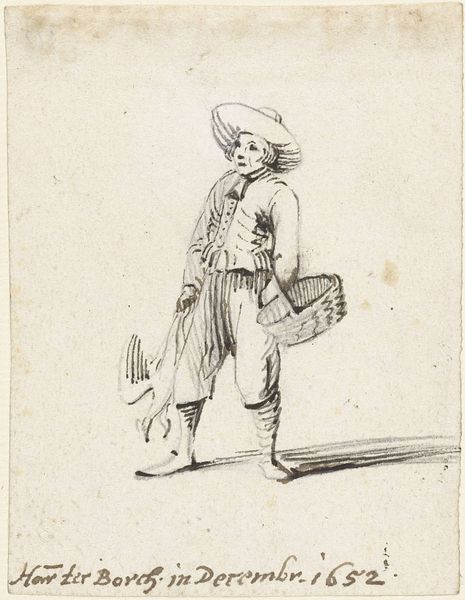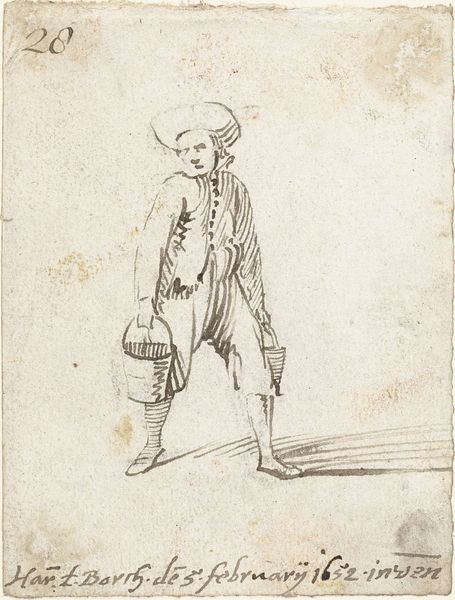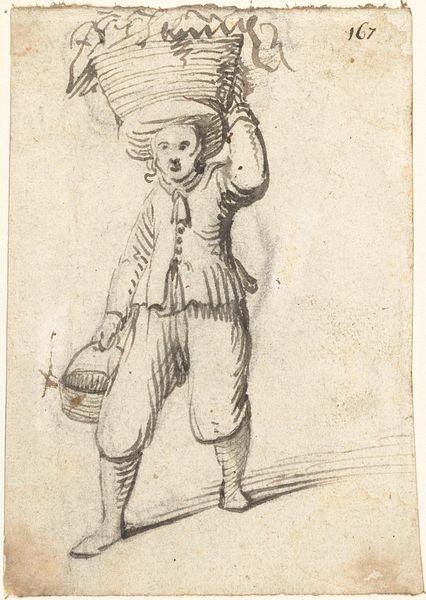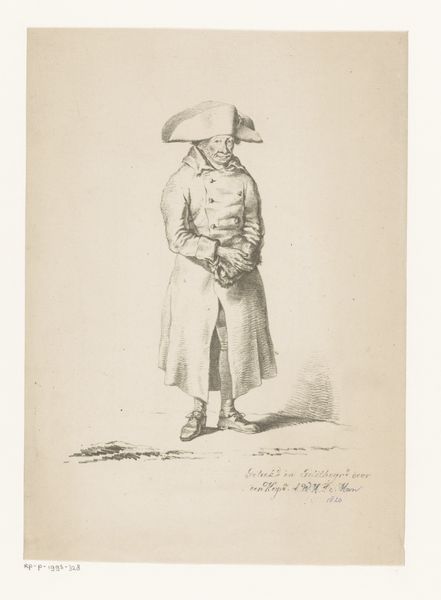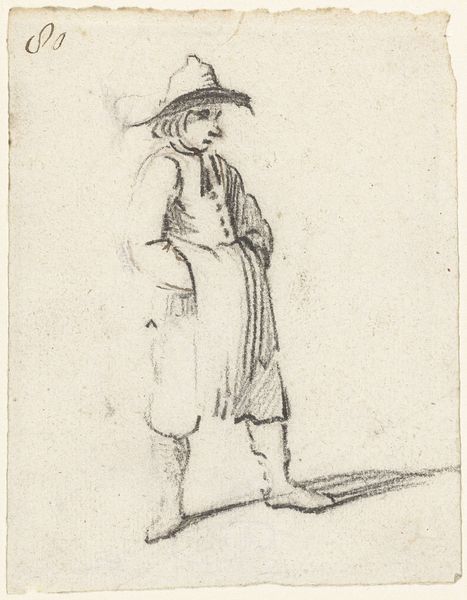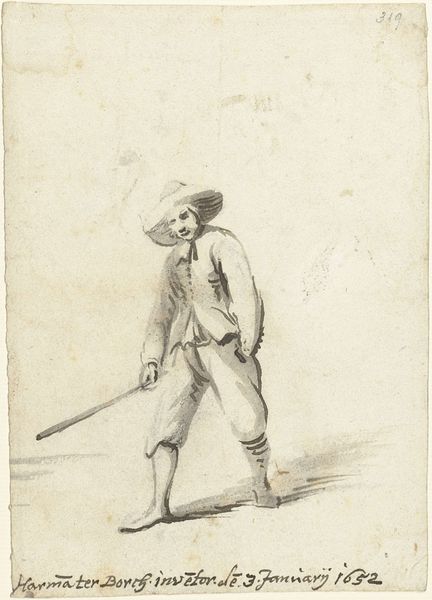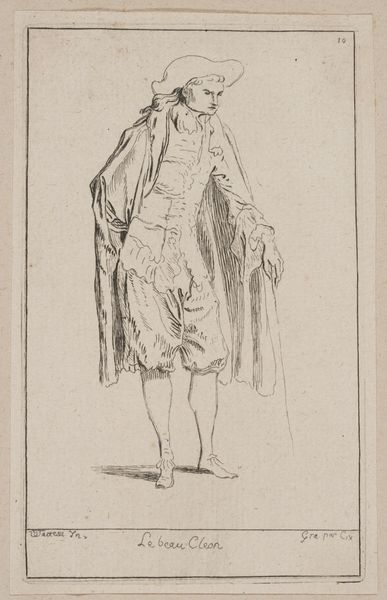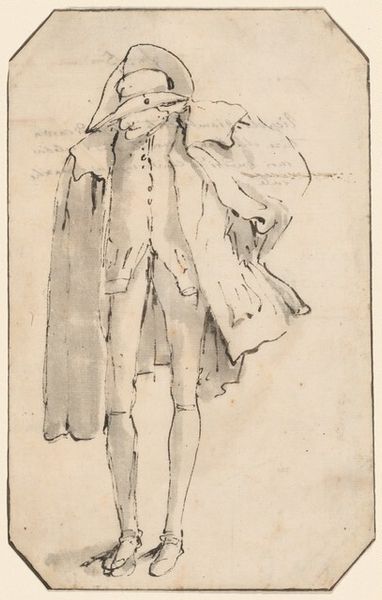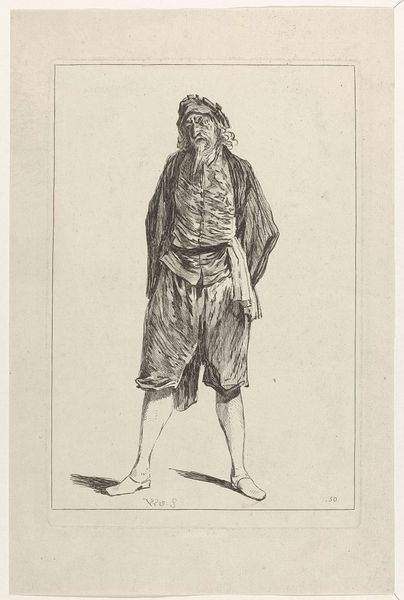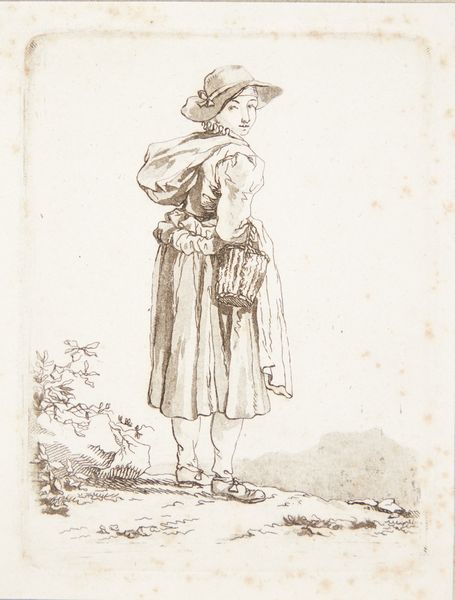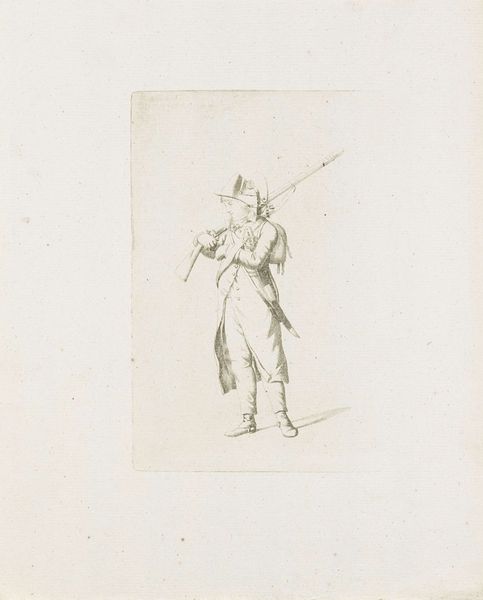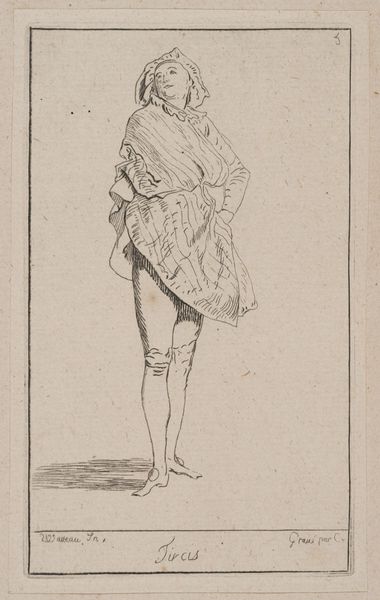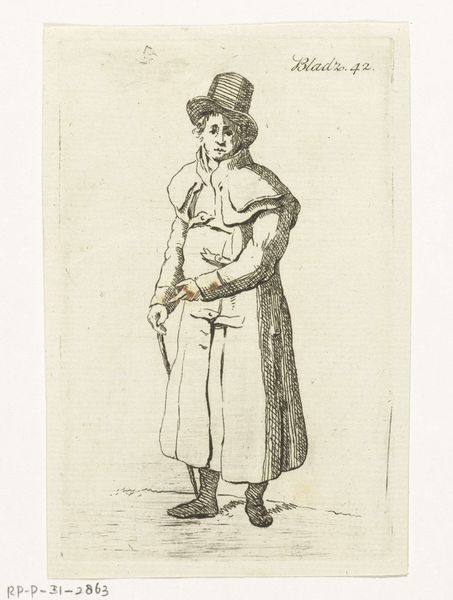
drawing, ink, pen
#
portrait
#
drawing
#
quirky sketch
#
baroque
#
dutch-golden-age
#
old engraving style
#
figuration
#
personal sketchbook
#
ink
#
idea generation sketch
#
sketchwork
#
ink drawing experimentation
#
pen-ink sketch
#
sketchbook drawing
#
pen
#
genre-painting
#
storyboard and sketchbook work
#
sketchbook art
Dimensions: height 99 mm, width 76 mm
Copyright: Rijks Museum: Open Domain
Editor: Here we have Harmen ter Borch's "Young Man with Hands in his Pockets, Facing Right," a pen and ink drawing from 1652, held at the Rijksmuseum. I find the figure quite endearing – there’s a casualness that feels modern, even though it’s centuries old. What's your take on this little sketch? Curator: I’m immediately drawn to the figure’s social position. This isn’t a formal portrait of nobility. Ter Borch captured someone from everyday life, likely from the burgeoning merchant class of the Dutch Golden Age. Do you think his posture challenges traditional notions of status, especially through body language? Editor: That's a great point! His relaxed stance definitely flies in the face of more rigid, posed portraits of the era. It feels subversive, almost. Curator: Precisely. Consider the social context of 17th century Netherlands, a republic forging a new identity. Artists were keen to represent ordinary people who drove the new capitalist economy. What does it tell us when we see a young man casually presented, as opposed to a king? Editor: It suggests a shifting of power, a democratization of art and, perhaps, society itself? The artist, by choosing this subject and portraying him without embellishment, seems to validate his existence, making him visible. Curator: Exactly. Think of how this contrasts with court portraiture that serves solely to elevate power. Ter Borch’s drawing implies a valuing of the individual, regardless of lineage, situating his importance within the social changes happening around him. This approach feels very topical even today. Editor: I see this sketch in a new light now – it's more than just a casual drawing. Thank you. Curator: The beauty of art lies in its connection to history and contemporary theory. It allows us to understand perspectives of social change throughout history.
Comments
No comments
Be the first to comment and join the conversation on the ultimate creative platform.
